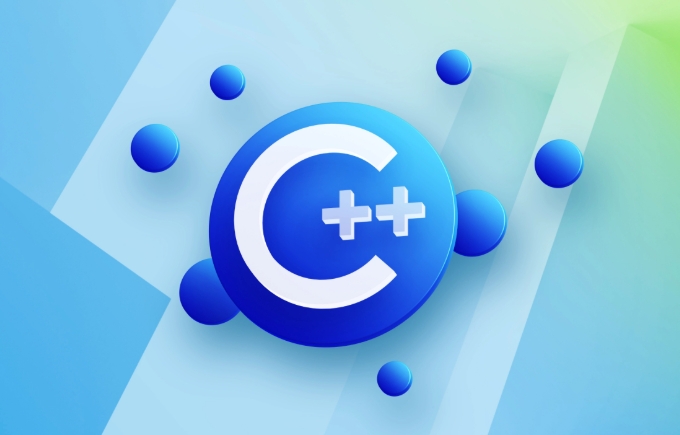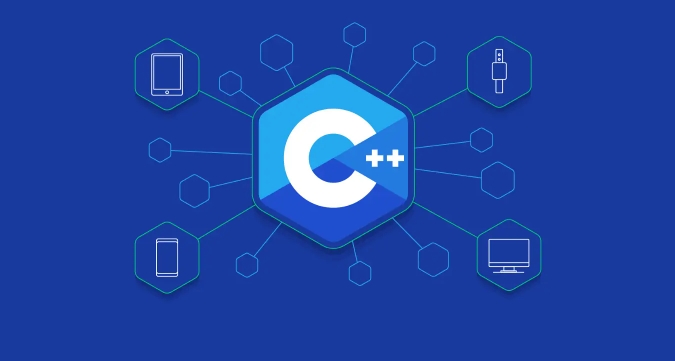std::filesystem in C 17 is a standard library module for cross-platform file system operations. It provides core components such as path, file_status, directory_entry, etc., and supports functions such as checking file existence, traversing directories, creating and deleting directories and processing paths. 1. It replaces the previous practice of relying on platform API or third-party libraries; 2. It supports common operations such as exists(), create_directory(), directory_iterator, etc.; 3. Automatically handle path format differences in different systems; 4. Pay attention to exception handling, platform differences and performance issues when using it.

std::filesystem in C 17 is a standard library module that provides a set of classes and functions for manipulating files, directories, and paths in a portable way. Before C 17, developers often relied on platform-specific APIs or third-party libraries like Boost to handle file system operations. Now, with std::filesystem , you can write code that works across different operating systems without needing external dependencies.

Key Features of std::filesystem
The main components of std::filesystem include:

- path : Represents a filesystem path (file or directory), handling string conversations, concatenation, and more.
- file_status : Holds information about a file's type and permissions.
- directory_entry : Represents an entry in a directory.
- directory_iterator : Iterates through the contents of a directory.
- recursive_directory_iterator : Traverses directories recursively.
- Functions for checking file existence (
exists()), copying files (copy_file()), creating directories (create_directory()), getting file size (file_size()), and more.
These tools make it easier to work with files and folders without relying on OS-specific calls.
Common Use Cases and Examples
Here are some everyday tasks you can do with std::filesystem .

Check if a File Exists
This is one of the most basic but essential operations:
#include <filesystem>
namespace fs = std::filesystem;
if (fs::exists("example.txt")) {
std::cout << "File exists\n";
} You can also check if it's a regular file or a directory using is_regular_file() or is_directory() .
List Files in a Directory
Use directory_iterator to loop through files:
for (const auto& entry : fs::directory_iterator(".")) {
std::cout << entry.path() << "\n";
}This prints all files and folders in the current working directory.
If you need to go into subdirectories too, just replace directory_iterator with recursive_directory_iterator .
Create and Remove Directories
Creating a directory is straightforward:
fs::create_directory("new_folder");And removing one:
fs::remove_all("new_folder"); // Removes even if not empty Note: remove() deletes only empty directories. For non-empty ones, use remove_all() .
Handling Paths Correctly
One of the biggest advantages of std::filesystem is how it handles paths consistently across platforms. You don't have to worry about backslashes vs. forward slashes — it takes care of that under the hood.
For example:
fs::path p = "data" / "images" / "logo.png"; std::cout << p; // Outputs "data/images/logo.png" on Linux/macOS, "data\images\logo.png" on Windows
You can also extract parts of a path easily:
-
p.parent_path()returns"data/images" -
p.filename()gives"logo.png" -
p.extension()gives".png"
This makes building and parsing paths much cleaner than using string manipulation.
Things to Watch Out For
While std::filesystem is powerful, there are a few gotchas:
- It may throw exceptions by default. If you don't want that, pass an error code object as the last argument to many functions.
- Not all operating systems support every feature — for example, certain permission-related functions behave differently on Windows and Unix-like systems.
- Performance can be an issue when iterating large directories or deeply nested structures.
So always test your code on target platforms and consider wrapping filesystem calls in try-catch blocks unless you're sure they won't fail.
That's the core of what you need to know about std::filesystem . It's not overly complicated, but it does take some time to get used to the types and methods. Once you're familiar with them, though, it becomes a solid part of your C toolkit for file management.
The above is the detailed content of What is std::filesystem in C 17?. For more information, please follow other related articles on the PHP Chinese website!

Hot AI Tools

Undress AI Tool
Undress images for free

Undresser.AI Undress
AI-powered app for creating realistic nude photos

AI Clothes Remover
Online AI tool for removing clothes from photos.

Clothoff.io
AI clothes remover

Video Face Swap
Swap faces in any video effortlessly with our completely free AI face swap tool!

Hot Article

Hot Tools

Notepad++7.3.1
Easy-to-use and free code editor

SublimeText3 Chinese version
Chinese version, very easy to use

Zend Studio 13.0.1
Powerful PHP integrated development environment

Dreamweaver CS6
Visual web development tools

SublimeText3 Mac version
God-level code editing software (SublimeText3)
 Using std::chrono in C
Jul 15, 2025 am 01:30 AM
Using std::chrono in C
Jul 15, 2025 am 01:30 AM
std::chrono is used in C to process time, including obtaining the current time, measuring execution time, operation time point and duration, and formatting analysis time. 1. Use std::chrono::system_clock::now() to obtain the current time, which can be converted into a readable string, but the system clock may not be monotonous; 2. Use std::chrono::steady_clock to measure the execution time to ensure monotony, and convert it into milliseconds, seconds and other units through duration_cast; 3. Time point (time_point) and duration (duration) can be interoperable, but attention should be paid to unit compatibility and clock epoch (epoch)
 How to get a stack trace in C ?
Jul 07, 2025 am 01:41 AM
How to get a stack trace in C ?
Jul 07, 2025 am 01:41 AM
There are mainly the following methods to obtain stack traces in C: 1. Use backtrace and backtrace_symbols functions on Linux platform. By including obtaining the call stack and printing symbol information, the -rdynamic parameter needs to be added when compiling; 2. Use CaptureStackBackTrace function on Windows platform, and you need to link DbgHelp.lib and rely on PDB file to parse the function name; 3. Use third-party libraries such as GoogleBreakpad or Boost.Stacktrace to cross-platform and simplify stack capture operations; 4. In exception handling, combine the above methods to automatically output stack information in catch blocks
 What is a POD (Plain Old Data) type in C ?
Jul 12, 2025 am 02:15 AM
What is a POD (Plain Old Data) type in C ?
Jul 12, 2025 am 02:15 AM
In C, the POD (PlainOldData) type refers to a type with a simple structure and compatible with C language data processing. It needs to meet two conditions: it has ordinary copy semantics, which can be copied by memcpy; it has a standard layout and the memory structure is predictable. Specific requirements include: all non-static members are public, no user-defined constructors or destructors, no virtual functions or base classes, and all non-static members themselves are PODs. For example structPoint{intx;inty;} is POD. Its uses include binary I/O, C interoperability, performance optimization, etc. You can check whether the type is POD through std::is_pod, but it is recommended to use std::is_trivia after C 11.
 How to call Python from C ?
Jul 08, 2025 am 12:40 AM
How to call Python from C ?
Jul 08, 2025 am 12:40 AM
To call Python code in C, you must first initialize the interpreter, and then you can achieve interaction by executing strings, files, or calling specific functions. 1. Initialize the interpreter with Py_Initialize() and close it with Py_Finalize(); 2. Execute string code or PyRun_SimpleFile with PyRun_SimpleFile; 3. Import modules through PyImport_ImportModule, get the function through PyObject_GetAttrString, construct parameters of Py_BuildValue, call the function and process return
 How to pass a function as a parameter in C ?
Jul 12, 2025 am 01:34 AM
How to pass a function as a parameter in C ?
Jul 12, 2025 am 01:34 AM
In C, there are three main ways to pass functions as parameters: using function pointers, std::function and Lambda expressions, and template generics. 1. Function pointers are the most basic method, suitable for simple scenarios or C interface compatible, but poor readability; 2. Std::function combined with Lambda expressions is a recommended method in modern C, supporting a variety of callable objects and being type-safe; 3. Template generic methods are the most flexible, suitable for library code or general logic, but may increase the compilation time and code volume. Lambdas that capture the context must be passed through std::function or template and cannot be converted directly into function pointers.
 What is a null pointer in C ?
Jul 09, 2025 am 02:38 AM
What is a null pointer in C ?
Jul 09, 2025 am 02:38 AM
AnullpointerinC isaspecialvalueindicatingthatapointerdoesnotpointtoanyvalidmemorylocation,anditisusedtosafelymanageandcheckpointersbeforedereferencing.1.BeforeC 11,0orNULLwasused,butnownullptrispreferredforclarityandtypesafety.2.Usingnullpointershe
 How does std::move work in C ?
Jul 07, 2025 am 01:27 AM
How does std::move work in C ?
Jul 07, 2025 am 01:27 AM
std::move does not actually move anything, it just converts the object to an rvalue reference, telling the compiler that the object can be used for a move operation. For example, when string assignment, if the class supports moving semantics, the target object can take over the source object resource without copying. Should be used in scenarios where resources need to be transferred and performance-sensitive, such as returning local objects, inserting containers, or exchanging ownership. However, it should not be abused, because it will degenerate into a copy without a moving structure, and the original object status is not specified after the movement. Appropriate use when passing or returning an object can avoid unnecessary copies, but if the function returns a local variable, RVO optimization may already occur, adding std::move may affect the optimization. Prone to errors include misuse on objects that still need to be used, unnecessary movements, and non-movable types
 How to generate a UUID/GUID in C ?
Jul 13, 2025 am 02:35 AM
How to generate a UUID/GUID in C ?
Jul 13, 2025 am 02:35 AM
There are three effective ways to generate UUIDs or GUIDs in C: 1. Use the Boost library, which provides multi-version support and is simple to interface; 2. Manually generate Version4UUIDs suitable for simple needs; 3. Use platform-specific APIs (such as Windows' CoCreateGuid), without third-party dependencies. Boost is suitable for most modern projects, manual implementation is suitable for lightweight scenarios, and platform API is suitable for enterprise environments.






